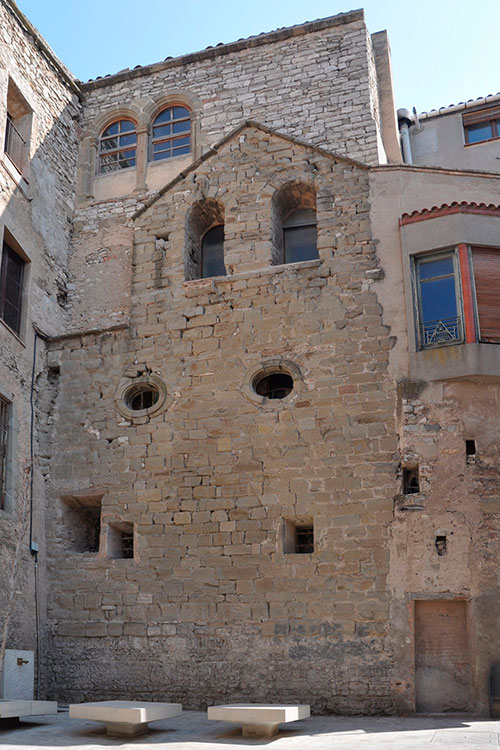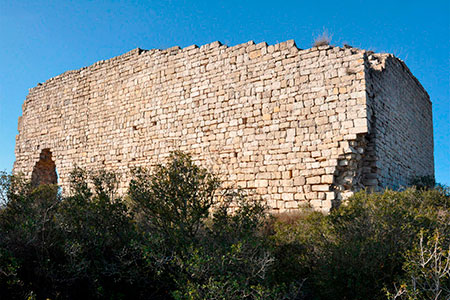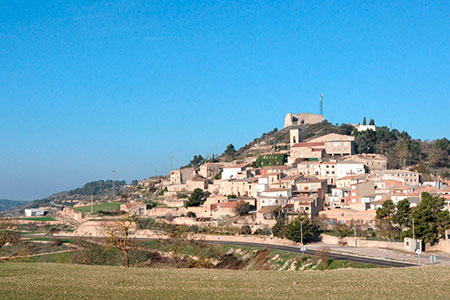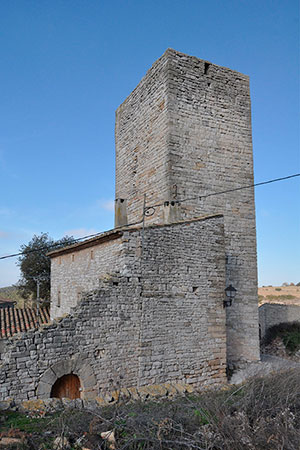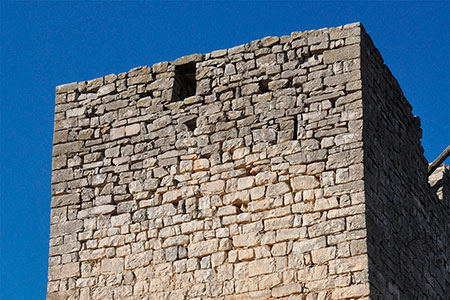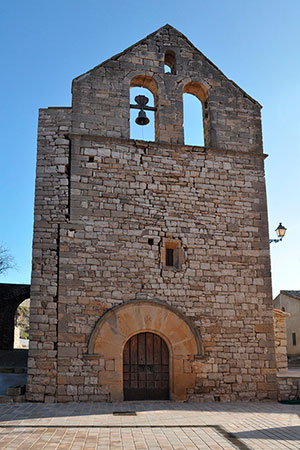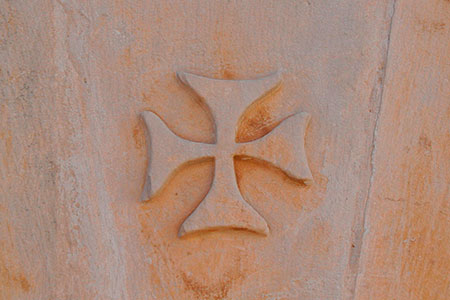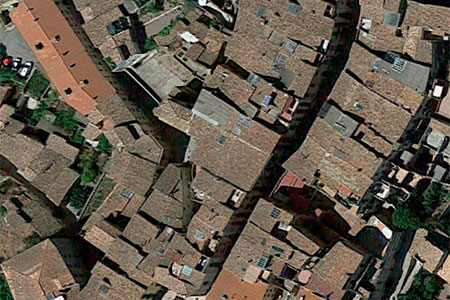The Hospitallers owned various properties in Cervera, documented from the year 1111. As a result of their presence, a new commandery was established, mentioned as early as 1172, from where they administered their possessions in the city and surrounding areas. From 1191, there is evidence of a double community led by a commander and a prioress.
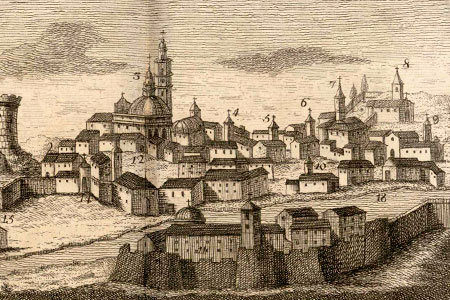
Detail of the Atlante español, ó Descripcion general geográfica, cronológica, è histórica de España (1778)
Biblioteca Nacional de España
Later, a new house was planned for the female branch, and in 1250 the corresponding authorization was obtained. However, this initiative had a short lifespan in the city, as in 1262 the Hospitaller nuns moved to Alguaire (Segrià). The house in Cervera brought together numerous estates and locations under its jurisdiction, including Espluga de Francolí, which would later become an independent commandery. During the 14th century, the institution declined, a situation that worsened over time.
Castle of Guàrdia Lada
The toponym Guardiam Grossam was mentioned in 1026 and is thought to refer to present-day Guàrdia Lada (Montoliu de Segarra), although it is not securely documented until the mid-11th century. In 1076, the castle belonged to Ramon Berenguer I, Count of Barcelona, and was held in fief by the Cervera family. By the 13th century, the site was owned by Guillem de la Guàrdia Lada and his wife Marquesa, of the Cervera lineage. In 1239, Marquesa became a Hospitaller nun and entered the Cervera commandery, eventually serving as prioress. She also donated the castle to the order, a gesture that sparked family disputes until a court ruling confirmed the donation in 1261. The Hospitallers maintained Castilians and the property there until the 19th century.. By 1660, only the walls remained.
Castle of l’Ametlla
The site of l’Ametlla (Montoliu de Segarra) was granted in 1077 by Counts Ramon Berenguer II and Berenguer Ramon II of Barcelona to Ecard Miró, who likely built or restored the castle and also the now-lost Torre del Planell, the origin of the castle and commandery of Vallfogona de Riucorb. In 1215, Ecard Miró’s descendants donated the castle to the Hospitaller Order, and it came under the authority of the Cervera commandery. It remained in Hospitaller hands until the 19th century.
Castle of Glorieta
The domain of the ancient castle of Glorieta (Passanant i Belltall, Conca de Barberà) was granted by Guillem de Guardiolada to his daughter Mateua. After her death, it passed to her sister Gueraua and their mother Marquesa, both Hospitaller nuns, who donated the castle to the Order between 1261 and 1266. In 1310, the Hospitallers acquired full seigniorial rights, and in 1380, they also obtained judicial authority. Although originally under the Cervera commandery, the castle later passed to the commandery of Espluga de Francolí, remaining so until the 19th century.
Church of Sant Joan de Cabestany
The village of Cabestany (Montoliu de Segarra) was also donated by Marquesa to the Hospitaller Order in 1266. Its lordship was shared between the Cervera commandery and the Aguilar lineage, who sold their rights to the Hospitallers in 1273. In 1380, the Hospitallers acquired full jurisdiction, which they administered from the commandery of Espluga de Francolí. They also took care of the parish church of Sant Joan, a well-preserved building from the 13th century.
- ALTURO, Jesús (2010). Diplomatari d’Alguaire i del seu monestir duple de l’orde de Sant Joan de Jerusalem (1245-1300). Barcelona: Fundació Noguera
- BACH I RIU, Antoni (1997). Castell de la Guàrdia Lada / Castell de Cabestany. Catalunya romànica. Vol. XXIV. Barcelona: Enciclopèdia Catalana
- BONNEAUD, Pierre (2009). Dos encomiendas hosptitalàrias de la Segarra (Cervera y Granyena) a finales de la edad media. Miscel·lània cerverina, núm. 19
- CORTS, Josep (1723-40). Estado antiguo y moderno de la ciudad de Cervera. Manuscrit. Arxiu Comarcal de la Segarra
- DURAN I SANPERE, Agustí (1977). Llibre de Cervera. Barcelona: Curial
- FUGUET SANS, Joan (1997). Templers i hospitalers I. Barcelona: Rafael Dalmau Ed.
- MIRET I SANS, Joaquim (1910). Les cases de Templers y Hospitalers en Catalunya. Aplech de noves y documents històrichs. Barcelona: C. de Caritat
- PIQUER I FERRER, Esperança (1995). Castell de Glorieta. Catalunya romànica. Vol. XXI. Barcelona: Enciclopèdia Catalana
- SABATÉ, Flocel (1997). Sant Joan de la Comanda de l’Hospital. Catalunya romànica. Vol. XXIV. Barcelona: Enciclopèdia Catalana
- Enllaç ↗ : Claustra
